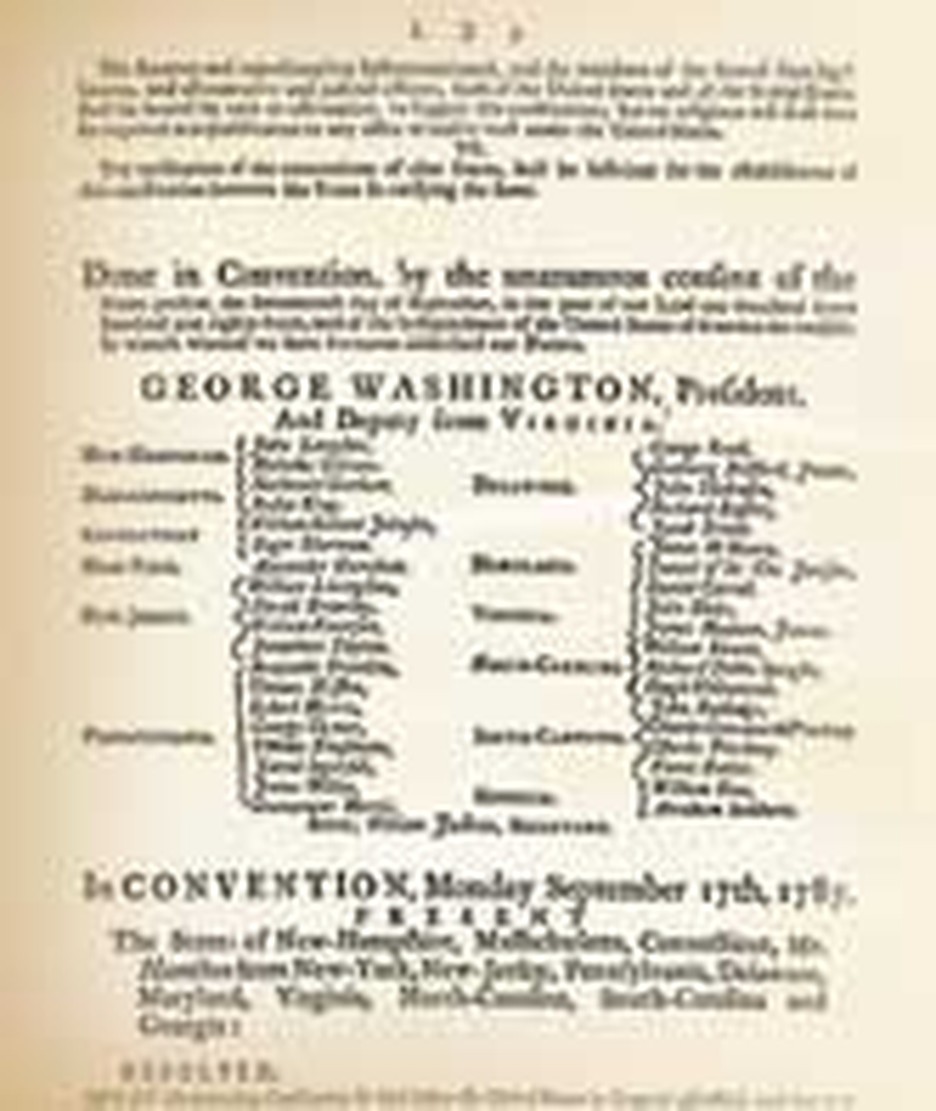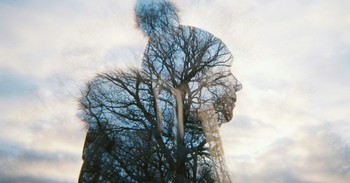
In recent years, controversy has raged throughout our American judicial system regarding the relationship between church and state.
Appeals are continually made to the "wall of separation between church and state." Was such a wall ever erected by our founding fathers? Or has this "wall" been invented by those who seek to keep Judeo-Christian morality from influencing public policy? Christian History Institute is pleased to present below the pertinent comments of Constitutional attorney and author John W. Whitehead. Mr. Whitehead is founder and president of The Rutherford Institute, a non-profit organization dedicated to the defense of religious freedom and civil liberties. He is also the author of the award-winning video series Grasping for the Wind.
Separation of Church and State
The concept of the separation of church and state is one of the most profound doctrines of our American history. It is also one of the most confusing. Unfortunately, this phrase has been used by special interest groups to oppress religious Americans and keep them from exercising their basic rights. However, both history and logic dispute the false claim that this oppression is authorized by the Constitution.
The Foundation of Religious Liberty
Religious liberty was a prime cause for the dispute between the American colonies and Great Britain. Parliament was attempting to force the establishment of the Church of England on the American colonies. John Adams believed this was responsible, "as much as any other cause," for the American Revolution. He said, "The objection was not merely to the office of a bishop, though even that was dreaded, but to the authority of Parliament, on which it must be founded." Historian Carl Bridenbaugh wrote: "It is indeed high time that we repossess the important historical truth that religion was a fundamental cause of the American Revolution."
The dangers of large government were visible to the framers of the Constitution. They knew that giving the government too much power would threaten the freedom of American citizens. Because of this, the First Amendment was written specifically to limit the power of the federal government. It protected the basic freedoms and rights of American citizens in the areas of religion, speech, press, and assembly. However, the most important of these was the guarantee of religious freedom. This was rooted in such Reformation doctrines as the priesthood of all believers, which came to be known as liberty of conscience.
Historian Roland Bainton writes that "all freedoms hang together.... Civil liberties scarcely thrive when religious liberties are disregarded, and the reverse is equally true. Beneath them all is a philosophy of liberty, which assumes a measure of variety in human behavior, honors integrity, respects the dignity of man, and seeks to exemplify the compassion of God." Jurist and scholar James Kent was an expert in early American law. In his Commentaries on American Law, he stated: "The free exercise and enjoyment of religious profession and worship may be considered as one of the absolute rights of individuals, recognized in our...law." Here again, we see the heritage of the Reformation. Kent was influenced by British jurist and legal scholar William Blackstone. He shared Blackstone's faith in the religious foundations of the law and adapted both the title and structure of his Commentaries to parallel Blackstone's.
The Separation of Church and State
Some Americans were not satisfied with the original Constitution. They feared that it created a government that was too powerful. Because of this, many in the clergy demanded a specific limitation or amendment concerning religion. Thus, the First Amendment came into being.
There was much concern that the federal government had the power to establish a national church or denomination. The First Amendment was drafted to keep this from happening. It protected the Christian denominations that were state preferred or established in many of the American colonies. In the words of James Madison, the First Amendment was prompted because the "people feared one sect might obtain a preeminence, or two combine together, and establish a religion to which they would compel others to conform." Denominational pluralism was the underlying philosophy of the First Amendment. This came from the desire for peaceful coexistence between the various denominations.
The First Amendment was ratified in 1791. At this time, many of the colonies still supported a single church or religion. Supreme Court Justice Hugo Black acknowledged this fact in the Supreme Court's 1962 decision to ban required devotional prayer in public schools. He said, "Indeed, as late as the time of the Revolutionary War, there were established churches in at least eight of the thirteen former colonies and established religions in at least four of the other five." Moreover, some states continued forms of this support into the first part of the nineteenth century. For example, new towns in Massachusetts were required to provide for a congregational minister. This continued until 1833.
Supreme Court Justice Joseph Story was a leading Unitarian of his time. He also served on the Supreme Court from 1811 to 1845. In his treatise on the Constitution, he stated that when the Constitution and the First Amendment were written, Americans generally believed the state should encourage Christianity, as long as it did not interfere with individual freedom of worship. In his words, "An attempt to level all religions, and to make it a matter of state policy to hold all in utter indifference, would have created universal disapprobation, if not universal indignation..." He went on to state his belief that the founding fathers were not trying to place Christianity on the same level as other world religions. Instead, the objective was to diminish denominational rivalry within the Christian church and prevent government from establishing a state church that would infringe upon the religious freedom of American citizens.
It should be obvious that the Constitution separated the institution of the church from the institution of the state. However, it did not separate the Judeo-Christian religious foundation from civil government. Neither did it separate religious people from activity within their state or society. At this time, the idea that a person of any religion should be excluded from practicing his or her religious principles except in church or at home would have been unthinkable.
The First Amendment states: "Congress shall make no law respecting an establishment of religion, or prohibiting the free exercise thereof." The word Congress is self-explanatory, but has been interpreted to mean the federal government. Respecting is defined as "concerning." In the context of the First Amendment, establishment could mean "government support of a single church or government preference of one creed or denomination over another." So if the First Amendment were written in contemporary language, it would probably read like this: "The federal government shall make no law concerning government support of a national denominational church, or prohibiting the free exercise of religion."
The term religion as used in the First Amendment is also interesting. Basically, the framers of the Constitution defined religion in terms of Judeo-Christian theism. James Madison termed religion as "the duty we owe our Creator." However, the United States Supreme Court has expanded the definition of religion under the First Amendment. The First Amendment now protects all religions and religious expression and guarantees freedom for all.
The First Amendment and the Bill of Rights originally placed restrictions on the federal government rather than the states. However, the Supreme Court, through interpretation of the Fourteenth Amendment, has determined that the Bill of Rights should restrict the actions of the individual states. This has led to an expansion of government powers.
The phrase wall of separation, indicating an impassable gulf between church and state, is not found in the United States Constitution. The phrase church and state is also lacking in the First Amendment. The American origin of this phrase comes from a letter written by Thomas Jefferson in 1802 to a group of Baptists and Congregationalists in Danbury, Connecticut. Jefferson was responding to a question about his opinion of the meaning of the First Amendment. Jefferson replied that the First Amendment erected a "wall of separation between Church and State."
However, in his second Inaugural Address, Jefferson said: "In matters of religion, I have considered that its free exercise is placed by the Constitution independent of the powers of the General [federal] Government. I have therefore undertaken on no occasion to prescribe the religious exercises suited to it, but have left them, as the Constitution found them, under the direction and discipline of the church or state authorities acknowledged by the several religious societies."
In his inaugural address, Jefferson placed a wall of separation around the church to protect it from infringement by the federal government. That aligned him with the other framers, who feared the federal government and its possible attempts to establish a national church. Religion was to be a state and individual concern. It was not to be a federal concern.
However, as early as 1879, the Supreme Court said that Jefferson's wall-of-separation phrase was "almost an authoritative declaration of the scope and effect of the [First] Amendment." The United States Supreme Court has ruled that some religious practices are unconstitutional if they occur in the public schools or other public places. Jefferson's wall-of-separation philosophy was one of the Supreme Court's major arguments in removing prayer and Bible reading from the public schools. However, Jefferson had nothing to do with the actual writing of the First Amendment. In fact, he was in Paris when it was written.
The Freedom for Religion
As constitutional law authority Edward S. Corwin points out, the purpose of the First Amendment was "to exclude from the national government all power to act on the subject...of religion." And in the words of James Madison: "There is not a shadow of right in the general [federal] government to intermeddle with religion.... This subject is, for the honor of America, perfectly free and unshackled. The government has no jurisdiction over it." The First Amendment, therefore, provides freedom for religion. It does not, as we so often hear today, provide freedom from religion.



